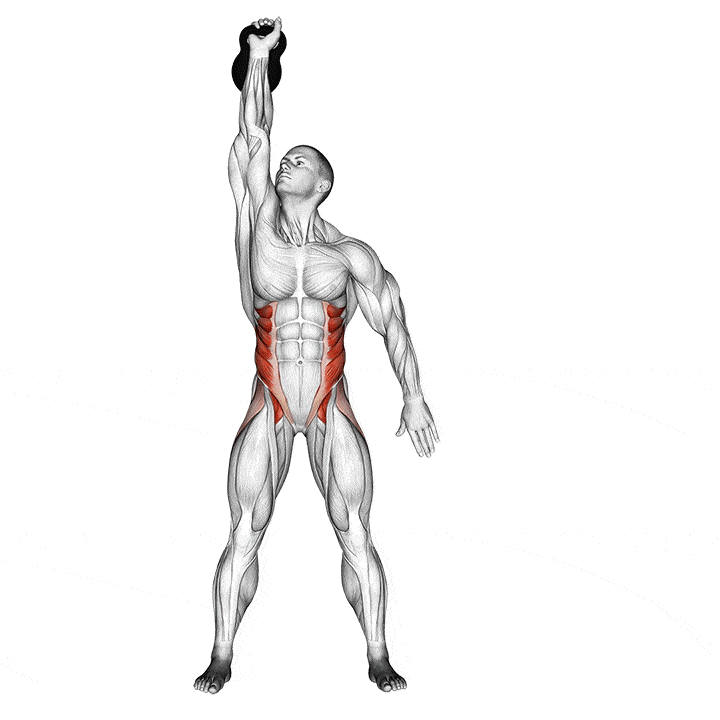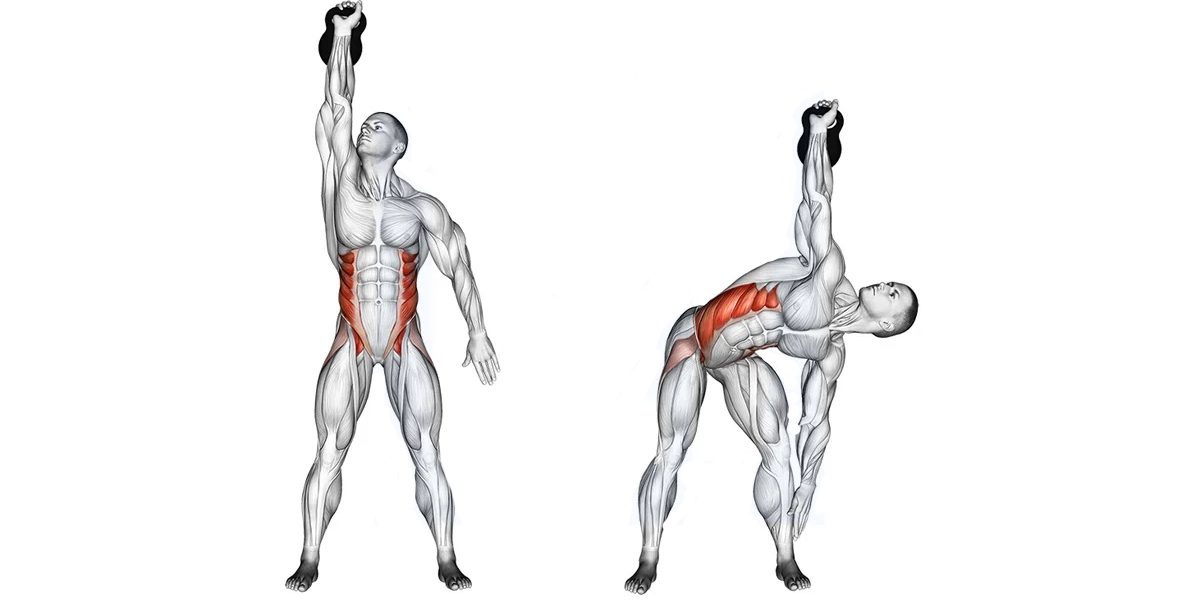Alright, let’s talk about one of my absolute favorite moves in the toolbox – the Kettlebell Windmill. It’s a powerhouse exercise that’s humbled more than a few seasoned lifters in my gym, myself included! It brutally exposes weaknesses while simultaneously building rock-solid core stability, shoulder resilience, and hip mobility – the kind of functional strength that translates directly to feeling more powerful and injury-proof in everything you do, from picking up your kids to crushing your next deadlift PR.
1. What is the Kettlebell Windmill?
You’re standing tall with a kettlebell locked out overhead in one hand. Now, imagine hinging at your hips and sliding your free hand down your leg towards your foot, while keeping that kettlebell rock-steady overhead. Your torso twists, your hips shift, and every stabilizer muscle. That’s the windmill. It’s not a lift in the traditional sense; it’s a controlled descent and ascent, demanding precision, flexibility, and total-body tension. Forget brute force; this is about mastering your body in space.
1.1 Kettlebell Windmill Muscles Worked
- Obliques and transverse abdominis
- Erector spinae and multifidus
- Rotator cuff and scapular stabilisers
- Gluteus medius and maximus
- Deltoids and triceps (top arm)
- Hamstrings and adductors
2. How to Do Kettlebell Windmill Step-by-Step

- Set Up:
Feet wider than shoulders, toes turned slightly away from your loaded side (e.g., bell in right hand → feet point left). Press kettlebell fully overhead, elbow locked. - Focus & Brace:
Eyes locked on bell. Pull shoulder blade down (“pack” shoulder). Brace core tightly. - Hinge & Slide:
Push hips back and toward the bell side. Slide free hand down your inner leg – only as far as you keep a FLAT BACK. - Hold Position:
Pause briefly at your depth (hand on shin/ankle/floor). Maintain tension: braced core, packed shoulder, engaged glutes. - Drive Up:
Push hard through your FRONT heel (e.g., left heel if bell is right). Engage glutes to lift hips forward. Keep eyes on bell. - Complete Rep:
Stand tall. Re-pack shoulder. Repeat reps on one side before switching hands.
3. Key Benefits of Kettlebell Windmill
- Unlocks Your Hips & Hammies: That deep hinge under load is magic for improving hip flexibility and lengthening tight hamstrings. Say goodbye to feeling stiff!
- Forges an Iron Core (Especially Anti-Lateral Flexion): Forget endless crunches. The windmill forces your obliques and deep core muscles to work together to resist collapsing sideways, building truly functional core strength that protects your spine during real-life twists and bends.
- Bulletproofs Your Shoulders: Holding weight overhead while moving dynamically requires incredible shoulder mobility and stability. It strengthens the often-neglected rotator cuff and scapular muscles, making your shoulders more resilient for presses, pulls, and life.
- Sharps Your Balance & Body Awareness: This move is a masterclass in proprioception. You learn to sense where your body is in space, control movement precisely, and maintain stability on one leg during the hinge. This translates to better movement quality everywhere.
4. Kettlebell Windmill Variations
- Standard (Top Hand Loaded): This is the classic described above – kettlebell only in the top hand. It emphasizes shoulder stability and anti-lateral flexion core strength the most. Best for: Most people, developing shoulder stability and core strength.
- Bottom Hand Loaded: Hold the kettlebell in your bottom hand (the one sliding down your leg). This shifts focus significantly. You’ll feel it more in your glutes and hamstrings on the weighted side during the hinge, and it challenges your core differently to resist rotation initiated from below. Best for: Emphasizing the hip hinge strength/stretch and offering a different core challenge. Often feels more stable for the shoulder initially.
- Double Kettlebell (Advanced): Hold a kettlebell in both hands – one locked out overhead, one either racked at the shoulder or hanging by your side. This significantly increases the core challenge (resisting forces from both directions) and overall load. Only attempt once both single variations are mastered! Best for: Serious strength athletes looking for maximum core overload and stability challenge. Not for beginners.
The Kettlebell Windmill isn’t just another exercise; it’s a litmus test for your movement quality and a potent tool to build resilient, functional strength. It demands respect and attention to detail. Start light, nail the form cues (eyes on bell, hip hinge, braced core, packed shoulder!), and be patient. The rewards – a stronger, more stable core, mobile hips, bulletproof shoulders, and sharper body awareness – are absolutely worth the effort.
Welcome! I’m Jordan Mitchell, the dedicated editor at Leadman Fitness, where we specialize in manufacturing high-quality bumper plates, barbells, weight machines, kettlebells, and dumbbells. With a passion for fitness and a keen eye for detail, I ensure that our product information is clear, accurate, and engaging for our customers. My role involves collaborating closely with our design and production teams to highlight the innovative features and superior craftsmanship that set Leadman Fitness apart in the industry. Whether you’re a professional athlete or a fitness enthusiast, I’m here to provide you with the information you need to achieve your training goals with our top-of-the-line equipment.
